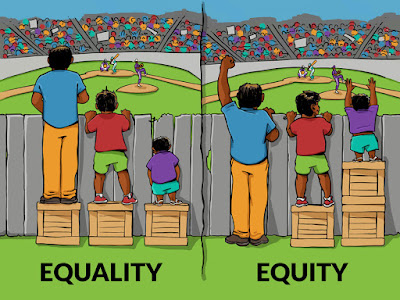Field maps anyone?
Physics and signal processing of field maps for dummies
In this post, I'm trying to make sense of why we acquire field maps, what they are, and how we use them (and yes I assume you know a little bit of how an MRI scanner works).
EPI images
Standard fMRI relies on Echo Plannar Imaging, you know this single pulse that gives you an entire slice of brain. Now, you also know MRI relies on gradients: while B0 is the magnetic field that orients the proton's spins, the observed resonance frequency also depends on additional small gradients. So typically, we use a pulse to excite protons in a slice and apply gradients that change linearly in space: Gy to create linear change from anterior to posterior in phase as protons are relaxing and Gx to create linear change from left to right in frequency, then the magic of (roughly) an inverse 2D Fourier transform takes place and we have a picture of that slice.
We also know that B0 is not homogenous and that there is a spatially varying magnetic susceptibility of the subject, that is the signal is not homogenous across the brain/head. As the phase-encoding gradient is several orders of magnitude weaker than the frequency encoding gradient, the inhomogeneous magnetic field manifests itself mainly as a geometrical distortion of the 2D slice image along the anterior-posterior direction (of course on your scanner you can ask to switch the frequency/phase encoding to get distortion in the left/right direction instead, but is this wise?).
Problems
If all slices were affected by the same distortion, there would be no problem but i) the amount of deformation differs from slice to slice (not the same magnetic susceptibility) ii) the amount of deformation differs from acquisition to acquisition (how stable is the scanner over time) iii) the amount of deformation differs because people move.
Motion causes i) susceptibility distortion, that is field inhomogenity causes different distortions of the images, and ii) susceptibility dropout, that is field inhomogenity causes signal loss due to through-plane dephasing.
The solution
Acquire an image of the (phase encoding direction) deformation to estimate a nonlinear unidirectional 2D (un)warping function (leaving the mathematical solutions proposed to the experts). The image of the deformation is typically a difference between images acquired with two different echo time or phase encoding directions.
Depending on your scanner, you can get (i) a phase difference image along with the magnitude image (ii) the two phase images and corresponding two amplitude images (iii) a field map showing the inhomogeneity (iv) multiple phase encoding directions. So this is pretty important to know what you get from your scanner before starting processing (undistort) the data. You can however already see here what we want: we want the field map (option iii) that we will derive from the phase and amplitude difference (option i) computed as a difference (option ii and iv).
Demonstrated effects on normalization and statistics
The effect of using field map is undistortion of volumes, which results in better voxel / time series alignments. Better voxel alignment means more accurate data and thus 'better' statistics. Undistorted volumes also mean better normalization to the T1 space, and across subjects, better normalization means better statistics.
Better realignment
Andersson et al. 2001 showed that unwarping lead to smaller residual variance in your time series, which consequently should improve the location of effects (see e.g. Chambers et al 2015).
Better normalization
Calhoun et al. 2017 showed that affine transformation of the EPI data to an EPI template followed by nonlinear registration to an EPI template reduces variability across subjects compared to affine transformation of the EPI data to the anatomic image for a given subject, followed by nonlinear registration of the anatomic data to an anatomic template, which produces a transformation that is applied to the EPI data. This was however not the case once distortion correction was used (see the figure 10 in the paper).
Better detection of resting state networks
Togo et al. 2017. results suggest that RSN show more robust functional connectivity (in particular DMN) and basal ganglia RSN showed some decreases in functional connectivity primarily in white matter, indicating imperfect registration/normalization without correction.
The work
Depending on the sequence used you need to know:
- effective echo spacing = 1/(BandwidthPerPixelPhaseEncode * image dimension in phase direction)
- total readout time
--> for FSL, this is the time from the centre of the first echo to the centre of the last echo = (number of echoes - 1) * echo spacing for plain standard EPI, so for a dual echo that will, be the echo spacing. Most of the time, we use parallel imaging and over fancy acquisition trick, so it's better to use = (image dimension in phase direction - 1) * EffectiveEchoSpacing;
--> for SPM, this is from the beginning of the first echo to the end of the last echo = 1/(BandwidthPerPixelPhaseEncode)
Read from json file: As all good neuroimagers, we use BIDS and thus images come with json files. In case you use dcm2niix, the json for the EPI already contains all that you want, for SPM 1/BandwidthPerPixelPhaseEncode and for FSL TotalReadoutTime.
Read from json file: As all good neuroimagers, we use BIDS and thus images come with json files. In case you use dcm2niix, the json for the EPI already contains all that you want, for SPM 1/BandwidthPerPixelPhaseEncode and for FSL TotalReadoutTime.
Now refer the manuals to work out what needs to be done ...
[updated for json info]


Comments
Post a Comment